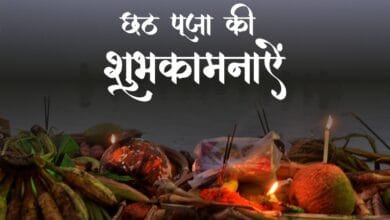How to Celebrate Makar Sankranti 2026: Rituals & Regional Guide

Makar Sankranti is one of India’s most vibrant harvest festivals, marking the sun’s transition into Capricorn (Makar) and the beginning of longer days. This auspicious festival celebrates the end of winter solstice and welcomes the harvest season with colorful kites, traditional sweets, and regional festivities across India.
Makar Sankranti 2026 Date
Makar Sankranti will be celebrated on Wednesday, January 14, 2026.
Unlike most Hindu festivals that follow the lunar calendar, Makar Sankranti is based on the solar calendar, which is why it typically falls on the same date every year—January 14 or 15. In 2026, devotees across India will observe this harvest festival with traditional rituals, cultural celebrations, and family gatherings.
Auspicious Timings for Makar Sankranti 2026
The most auspicious time for performing rituals and taking holy dips is during the early morning hours, particularly at sunrise. Devotees traditionally wake up before dawn to maximize the spiritual benefits of this sacred day.
The Significance of Makar Sankranti
Makar Sankranti holds deep spiritual and agricultural significance in Hindu culture. The festival marks:
- Astronomical importance: The sun’s entry into Makara Rashi (Capricorn zodiac)
- Agricultural celebration: The harvesting of winter crops like wheat, sesame, and sugarcane
- Spiritual transition: The beginning of Uttarayan, considered an auspicious six-month period
- Cultural unity: Despite regional variations, the festival unites India in celebration
According to Hindu mythology, Lord Surya (Sun God) visits his son Shani (Saturn), who rules Capricorn, making this an occasion to honor familial bonds and resolve conflicts.
Traditional Makar Sankranti Rituals
1. Holy Bath (Snan)
Taking a holy dip in sacred rivers like the Ganges, Yamuna, or Godavari is considered highly auspicious on Makar Sankranti. This ritual is believed to cleanse sins and bring spiritual merit.
How to perform:
- Wake up before sunrise
- If visiting a river, take a complete dip three times
- Offer water to the Sun God (Surya Arghya)
- Chant mantras or prayers while bathing
2. Til-Gud Distribution
Exchanging sesame seeds (til) and jaggery (gud) is a hallmark tradition. The phrase “til-gud ghya, god god bola” (take sesame and jaggery, speak sweetly) embodies the festival’s spirit of spreading sweetness and goodwill.
3. Charity and Donations (Dan)
Makar Sankranti is considered one of the most auspicious days for charity. Traditional donations include:
- Sesame seeds, jaggery, and blankets
- Food grains and clothing
- Cows or money to the needy
- Feeding Brahmins and the poor
4. Sun Worship
Offering prayers to Lord Surya with flowers, incense, and traditional foods is essential. The worship expresses gratitude for the harvest and seeks blessings for prosperity.
5. Kite Flying
Kite flying has become synonymous with Makar Sankranti, especially in northern and western India. The sky fills with colorful kites, symbolizing the spirit soaring toward the divine.
Regional Variations: How Different States Celebrate
Punjab and Haryana: Maghi and Lohri Connection
In Punjab, Makar Sankranti is called Maghi and often celebrated alongside Lohri. The festivities include:
- Traditional Punjabi delicacies like til rice, jaggery, and khichdi
- Community bonfires and folk dances
- Visiting gurdwaras for prayers
- Distribution of rewri and gajak
Gujarat: The Kite Festival Capital
Gujarat transforms into a vibrant spectacle during Uttarayan:
- International kite flying competitions
- Rooftop celebrations with undhiyu and chikki
- Special kite markets selling colorful patang
- Night kite flying with illuminated kites (tukkals)
Maharashtra: Tilgul and Traditional Greetings
Maharashtrians celebrate with the exchange of tilgul laddoos:
- Women perform haldi-kumkum ceremonies
- Traditional greeting: “Tilgul ghya, god god bola”
- Preparation of puran poli and til laddoos
- Multi-colored sarees worn for festivities
Tamil Nadu: Pongal Festival
In Tamil Nadu, the festival is celebrated as Pongal, a four-day harvest festival:
- Bhogi Pongal: Discarding old items and lighting bonfires
- Surya Pongal: Cooking the traditional Pongal dish in new pots
- Mattu Pongal: Honoring cattle and livestock
- Kaanum Pongal: Family reunions and outings
Karnataka: Ellu Birodhu and Sugarcane
Karnataka celebrates with Makara Sankramana:
- Exchange of ellu birodhu (sesame and jaggery mixture)
- Sugarcane and banana distribution
- Preparation of ellu unde and yellu bella
- Traditional saying: “Ellu bella thindu, olle maathu aadu”
Assam: Magh Bihu
Assam celebrates Magh Bihu or Bhogali Bihu:
- Building temporary huts called Meji and Bhelaghar
- Community feasts with traditional rice cakes (pithas)
- Lighting bonfires at dawn
- Traditional Bihu games and buffalo fights
West Bengal: Poush Sankranti
Bengali celebration called Poush Sankranti features:
- Preparation of pithe (rice cakes) and payesh
- Ganga Sagar Mela, a massive pilgrimage
- Traditional sweets made from date palm jaggery
- Community feasts and cultural programs
Rajasthan: Sweets and Charity
Rajasthani celebration includes:
- Distribution of til patti and gajak
- Women singing traditional folk songs
- Feeding cows and birds
- Flying kites on terraces and in open fields
Traditional Foods for Makar Sankranti
Essential Ingredients
The festival prominently features sesame seeds and jaggery, both considered warming foods perfect for winter:
Popular Dishes Across India:
- Til Laddoo: Sesame seed balls sweetened with jaggery
- Gajak and Rewri: Crunchy sesame and jaggery confections
- Khichdi: Rice and lentil dish, especially in Bihar and UP
- Undhiyu: Mixed vegetable curry from Gujarat
- Pongal: Sweet rice dish from Tamil Nadu
- Puran Poli: Sweet flatbread from Maharashtra
- Pithe: Rice cakes from Bengal and Assam
Recipe: Traditional Til Laddoo
Ingredients:
- 1 cup roasted sesame seeds
- 1 cup jaggery (powdered)
- 2 tablespoons ghee
- 1/4 teaspoon cardamom powder
Method:
- Heat jaggery with 2 tablespoons water until it melts
- Add roasted sesame seeds and cardamom
- Mix well and add ghee
- Let it cool slightly, then shape into round laddoos
- Store in an airtight container
Modern Ways to Celebrate Makar Sankranti 2026
Eco-Friendly Celebrations
- Use biodegradable kites made from paper and bamboo
- Opt for cotton strings instead of harmful plastic-coated manja
- Organize community clean-up drives post-celebration
- Choose natural colors and organic materials
Virtual Celebrations
- Host virtual kite-making workshops
- Share traditional recipes through video calls
- Organize online cultural programs
- Create digital greeting cards with traditional motifs
Community Initiatives
- Organize charity drives for winter clothing
- Distribute food to the underprivileged
- Conduct awareness programs about the festival’s significance
- Arrange cultural programs showcasing regional diversity
Spiritual Practices for Makar Sankranti
Meditation and Yoga
The early morning hours of Makar Sankranti are ideal for:
- Surya Namaskar (Sun Salutation)
- Meditation facing the rising sun
- Pranayama breathing exercises
- Chanting Gayatri Mantra or Aditya Hridayam
Astrological Significance
Makar Sankranti marks the beginning of Uttarayan, considered highly auspicious for:
- Starting new ventures
- Performing sacred ceremonies
- Spiritual growth and enlightenment
- Achieving moksha (liberation)
Shopping Guide for Makar Sankranti 2026
Essential Items to Purchase
- Colorful kites and strings
- Sesame seeds and jaggery
- New earthen pots for cooking
- Traditional sweets and snacks
- Warm clothes and blankets for donation
- Puja items (flowers, incense, diyas)
Gift Ideas
- Customized kite sets with personalized messages
- Hampers of traditional sweets
- Handcrafted regional artifacts
- Organic til-gud products
- Cultural books or decorative items
Safety Tips for Kite Flying
- Fly kites in open spaces away from power lines
- Avoid using sharp or coated manja (string)
- Keep first-aid kits handy for minor injuries
- Stay hydrated and use sunscreen
- Supervise children during kite flying
- Respect neighbors and avoid flying kites over private properties
Environmental Considerations
Sustainable Celebration Tips
- Use eco-friendly kites and natural strings
- Dispose of broken kites properly
- Avoid plastic decorations
- Choose organic ingredients for traditional foods
- Minimize food waste by sharing excess
- Support local artisans and vendors
Conclusion
Makar Sankranti 2026 offers a beautiful opportunity to embrace India’s rich cultural heritage while celebrating the harvest season and the sun’s auspicious journey. Whether you’re flying kites in Gujarat, preparing Pongal in Tamil Nadu, or exchanging tilgul in Maharashtra, the essence remains the same—gratitude, togetherness, and spreading joy.
As you prepare for January 14, 2026, remember that the true spirit of Makar Sankranti lies in sharing sweetness, performing good deeds, and strengthening community bonds. May this harvest festival bring prosperity, happiness, and abundant blessings to your life.
Happy Makar Sankranti 2026!
follow us on x.com
Discover more from Sanatan Roots
Subscribe to get the latest posts sent to your email.




One Comment